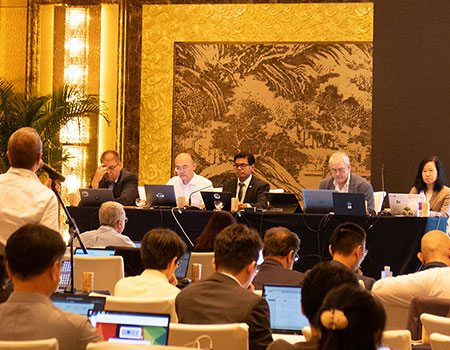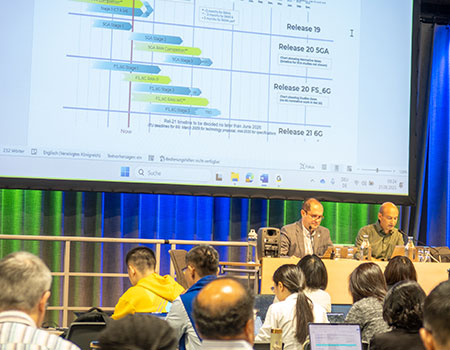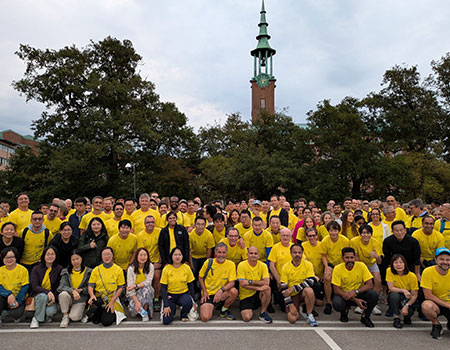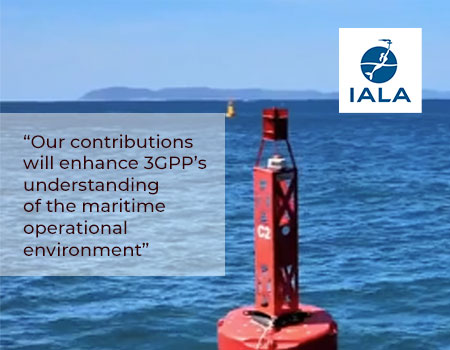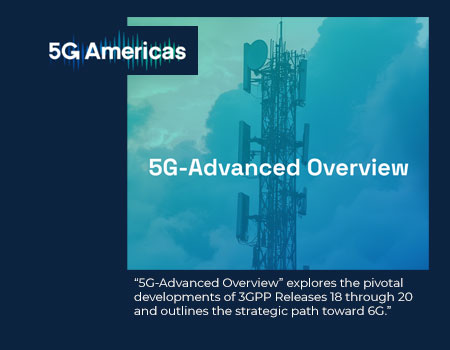Changing 3GPP to help the verticals
February 25, 2020
Our latest video, recorded at TSG#86 in Sitges, December 2019, brings together:
- Joachim Walewski, Siemens
- Roland Beutler, EBU
- Nicolas Chuberre, Thales Alenia Space
- Georg Mayer, 3GPP SA Chair.
They discuss the reasons why their sector is in 3GPP and how they feel it is going. There are some frank views on the difficulties encountered and the frustrations that still persist, but there are also some clues on how new verticals don't have to start from scratch and how the project is making attempts to learn from the experience of adapting to the needs of the verticals.
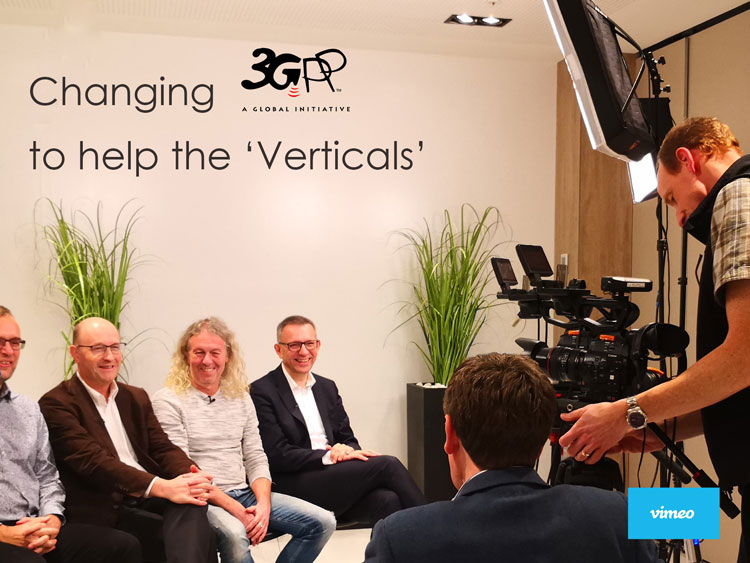 The video is unwieldy because of its length, but we hope that there is enough here to merit the effort to watch. If you do - thank you!
The video is unwieldy because of its length, but we hope that there is enough here to merit the effort to watch. If you do - thank you!
- View the video here: https://vimeo.com/393459786
Interview transcript
(with some clean up to clarify certain points):
Guy Daniels: Georg, you are the chair of the SA group. How does 3GPP address the demands of the other sectors – many of whom are new to 3GPP?
Georg Mayer, SA Chair: First of all, it is a long process. It is a process that we started several years ago, when we saw that the network that we are providing is also valuable for industrial connection and also for other players than just the traditional telecommunications companies. Since then, we have gradually expanded our scope and with 5G the centre of our focus is to evolve the network in to a platform that verticals can use – so that they are enabled to run their services.
That has influence in practically all levels of 3GPP. Firstly the technology, where we need to talk with the industry representatives, we need to invite them [to 3GPP meetings]…
GD: Siemens is a major industrial company. What areas are Siemens primarily involved in within 3GPP?
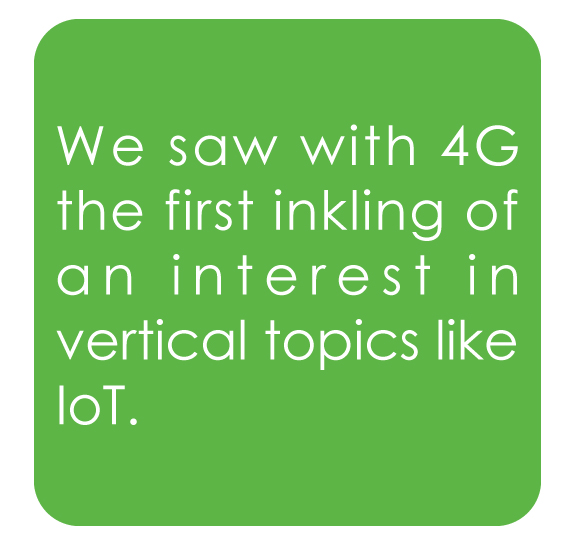 Joachim Walewski, Siemens (1.55): We are interested in the same topics that we also have as a business. I often call in hyper-physical control – Siemens is really about how to control physical things, like a train or how to distribute electricity or how to produce things in a factory. We are providing solutions for that and that is what has brought us in to 3GPP, because we saw with 4G the first inkling of an interest in vertical topics – like IoT. In 5G also, this [IoT] was one of the corners of the triangle, which is where we could identify ourselves.
Joachim Walewski, Siemens (1.55): We are interested in the same topics that we also have as a business. I often call in hyper-physical control – Siemens is really about how to control physical things, like a train or how to distribute electricity or how to produce things in a factory. We are providing solutions for that and that is what has brought us in to 3GPP, because we saw with 4G the first inkling of an interest in vertical topics – like IoT. In 5G also, this [IoT] was one of the corners of the triangle, which is where we could identify ourselves.
GD: Tell me more about the 5G-ACIA and the role it plays.
JW: 5G-ACIA was founded to cater for both the operational technology – that’s communications solutions providers such as Siemens – but also machine manufacturers and the users of all these products. Then on the other side, there are ICT [companies] like the chip vendors and other providers are there. We have currently 57 members, roughly evenly divided between the two ‘roles’.
GD: One area that you are involved in is cyberCAV, that is the replacement of physical cables on the factory floor. Is this something that could also be used in other verticals?
JW: If you look at cyberCAV, just as the original proposal, it was already very open from the beginning. The only thing we said was that we would like to focus on controlling the physical environment, because you will see a lot of the requirements are actually the same. Whether you distribute electricity or you operate a train – while the language is completely different in both fields – if you look at the requirements, you will see a lot of synergy there. We wanted to make 3GPP aware of the fact that the verticals sound very different and also the business models are different – but often their communication technology can be very much the same and that has two allures really; One is alleviating the fear that 3GPP would have, like do we have to make the 3GPP architecture more complicated every time we add a vertical, where in the end we have a mess of an architecture with solutions for each vertical? Our message was; no, you can cover ~90% with common features and that you don’t have to construct expensive solutions for each of the verticals.
GD: Roland, you are a representative of the European Broadcasting Union (EBU), can you describe how broadcasters and the wider broadcasting industry view the potential for 5G for production and also the delivery of content?
Roland Beutler, EBU (5.14): Part of the technology that we are using to shoot this video is actually one of our interests and where we believe that 5G technology can help us in the future. The trend now is that everything is going wireless, if you have a typical stage event, like a concert, there used to be the guitarist connected by cables, the monitors in front of them…this is all replaced by in-ear monitors and we are using cameras that are wireless as is group communication on-site too. That’s one side of the coin. The other part is when it comes to distributing content to users.
This is actually what got us engaging in 3GPP in the first place. We had discovered a fundamental gap in our distribution strategy…We are using satellite, cable, terrestrial networks. We are on the internet, with a lot of stuff – but, we had a problem getting all of our content on smartphones and tablets. We had been trying for a long time to get a broadcast receiver in there - this was a complete failure – but five years ago, all-of-a-sudden, there was an opportunity to enter the 3GPP ecosystem, to do something from within.
GD: Nicolas, Thales is a leader in the satellite sector. Can you explain a little more to us about Non-terrestrial networks (NTNs)?
Nicolas Chuberre, Thales Alenia Space (6.50): NTN refers to all of the networks that rely on spaceborne platforms as well as airborne platforms. We started the study in order to evaluate; what impact the support of these kinds of network would have on the 5G system.
We just completed the first two studies, in parallel in TSG SA and TSG RAN (TR38.821 – Radio solutions and TR 23.737 – Architecture aspects ) .
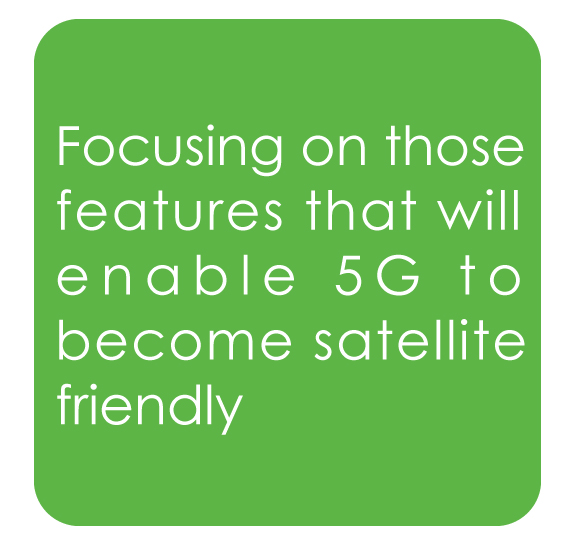 So, we now have a good understanding of what are the features needing to be developed, so that the 5G system becomes supportive of satellite and airborne systems. We now understand that [the work needed] is not as extensive as we expected, so we are very satisfied with this work and now we are going to continue with the normative phase, focusing on those features that will enable 5G to become ‘satellite friendly’.
So, we now have a good understanding of what are the features needing to be developed, so that the 5G system becomes supportive of satellite and airborne systems. We now understand that [the work needed] is not as extensive as we expected, so we are very satisfied with this work and now we are going to continue with the normative phase, focusing on those features that will enable 5G to become ‘satellite friendly’.
GD: Georg, we have heard the views of three industry sectors here today. How much of a challenge is it for you to guide this work through the various stages in 3GPP?
GM (8.18): From what we just heard, we understand that every vertical is very different. There is not a single voice that can represent them, as is true for other groups or factions that we have in 3GPP as well. The operators, the chipset vendors, network vendors – They all have common interests, but in the end they have different voices.
Here though, we see a broad variety. We see the wireless factory, which is practically in one location, the satellites in the sky and more-or-less providing the service rather than using the service and then the broadcasting services, where we go towards the smartphones and a huge amount of devices.
We need to look at all of their requirements. We start by individual industries…they produce documents that tell us what is needed on a very high level. This is the first phase, we call it the requirements phase. Once we have done this we go into the technical phase, that is where we look at how these requirements fit in to the architecture of the global mobile network. There it becomes diverse for us, we have different working groups that are looking in to that. This is a big challenge; this step – this second step practically – from having the requirements into the more technical area. This is usually very challenging for newcomers. It means that you usually need more people, you need to have different focus for different working groups and there is still a lot to do to educate new people and still a lot to do for the established delegates – from the companies that are a long time in 3GPP – to handle new views in the room. We are an organization that exists for over 20 years and there are certain ’rituals’, certain ways of working that we are used to, and some of them need to be broken up, need to be more flexible than they were before.
We are trying to do this at the moment. So, this is really catering for the new voices that are coming in. This is one of the biggest challenges that we are currently facing. This is completely aside from the technical challenges we are facing, but as a community this is something that we are aware of and it will change us. I changed us already and we will try to go step-by-step, taking – hopefully – the right steps.
GD: A question to all of you. What can we learn from early 5G efforts to bring in new sectors?
RB (11.46): We certainly have all learned our lessons, sometimes hard lessons. For a vertical coming from the outside, speaking a different language from a different eco-system, it is sometimes at the beginning not understandable how 3GPP is working. It already starts with the way documents are dealt with. I come from an ITU, CEPT background and the process is different. The way documents are dealt with is completely different… Then, the process itself [in 3GPP] is very complicated for the outsider. What is needed – and I think the first steps have been taken now – is to educate the verticals, take them by the hand and lead them through the process and identify people that can help them.
 NB (12.43): Coming to 3GPP is about the integration of our technology with cellular and integration means working together, building together the features and the system. So, it means we need to interact and indeed we have found that it took many meetings to understand each other. What we see in the end is enormous value in the exchange of technical ideas and ways to solve problems that are different in cellular, compared to satellite, but we can mix the two and get the best out.
NB (12.43): Coming to 3GPP is about the integration of our technology with cellular and integration means working together, building together the features and the system. So, it means we need to interact and indeed we have found that it took many meetings to understand each other. What we see in the end is enormous value in the exchange of technical ideas and ways to solve problems that are different in cellular, compared to satellite, but we can mix the two and get the best out.
For the [3GPP] process, I fully share what Roland said – It is very complex. Either you appoint somebody who is already familiar with this [3GPP] process or you have a huge amount of work ahead, to get to know it. Each group has a different process! But, I don’t have a solution for this.
JW (14.08): I also see there is a structural problem in how 3GPP is set up right now, for verticals. If we really wanted to see the project through, we would need something like twenty delegates. That is something I don’t see any vertical doing. So - of course I cant ask you [3GPP] to change who you are – but, whatever could help us to not have to send so many people would really help lower the entry threshold for other companies, who don’t have the muscle to bring in so many people.
One initiative has started, but I haven’t yet seen the outcome of it, which is an accountability sheet [or spreadsheet] where we see – here is the vertical requirement, here are your features and here are the arguments why these features actually address the requirement. If we could have that, maybe in the beginning for just 10% of the requirements we bring in, that would help everyone tremendously. Also, this would really reduce the workload for some working groups, because a lot of the questions nowadays are about ‘what is this feature?’ and they don’t know the feature and so formulate new requirements, then everyone tells them – as we were told - that ~80% of what we brought in was already solved! There was no way for us to know that these requirements were already addressed.
GD: So, despite the effort, we all still realise that 5G has considerable potential for all of us.
RB: Sure, that’s true and that is why we are here.
JW (16.05): and also, to be charitable, we already use 4G and 3G and even 2G technology. We really love EDGE (enhanced data rates for GSM), but what really was missing so far was the guarantee that we need. So, we are here with a long track record of using the technology, but really pushing it towards using it for control or in this case of audio / video production – this is lacking for the all out wireless production scenario. We have past experience where we like a lot of the [3gpp] things, but we think that if you really want to go towards convergence and having one technology that helps you access a certain communications service; then you have to meet a little bit more the needs of the industries. That’s also where the pain comes in, because normally you do the easy part first and the rest is harder.
We saw that in [3GPP] SA1, they were very welcoming, I really recommend to go there – even if you don’t really want to write requirements first – it is the group that is less ‘alien’ to an outsider coming in… I still have to learn [3GPP] SA2 as a language, it is quite complex and really hard, compared to SA1.
GD: There is obviously still a lot of work to do. How useful is all of this initial feedback?
GM (17.42): What we did already – I just want to say a few things from what we have heard – we introduced a certain amount of new processes. We have a newcomers session and we try to do this at the bigger meetings; where we really introduce 3GPP to the new people on a very high level, but where people can also ask questions. We set up a mentoring process, where people can ask questions – especially for newcomers, but also for people who find parts of our processes mysterious.
It is true that every working group has its own traditions, their own ways of working, atmosphere and so-on. I agree that this is something that people need individually to cope with and something where we can only support them to a limited extent.
 One thing I also heard before, was that the process structure in 3GPP is maybe not so linear, or not so clearly set up. In the beginning it may look like that; you come with a requirement, and people come with a big idea. They say “I want a wireless factory and I want to do this with 5G”. That’s a great idea, but then you meet with reality and you are faced with up to 200 companies in the room – That also have their specific requirements towards 5G and what it should do in the next 3 to 4 years. So, you have to cut down your big vision into chunks that are actually achievable within foreseeable steps.
One thing I also heard before, was that the process structure in 3GPP is maybe not so linear, or not so clearly set up. In the beginning it may look like that; you come with a requirement, and people come with a big idea. They say “I want a wireless factory and I want to do this with 5G”. That’s a great idea, but then you meet with reality and you are faced with up to 200 companies in the room – That also have their specific requirements towards 5G and what it should do in the next 3 to 4 years. So, you have to cut down your big vision into chunks that are actually achievable within foreseeable steps.
This is what we are doing, and once you do that – once you have reduced your requirements to an amount that can be handled, your effort then becomes smaller. I wouldn’t say that you need 20 people in 3GPP to go through one [3GPP] Release, you need 5 or 6 people that are willing to travel a lot, that are willing to socialise with people that are from completely different industries…and can work with a week that only has four hours sleep a day (Georg was speaking in the middle of one of the most intense TSG SA meetings in recent years, so he may have overstated the sleep part)…but then you get things going. I think that the three industries that we have here, they are very diverse, but all three of them have achieved something in the last few years – in 3GPP. I guess all three of you, have – to a certain extent – got what you came initially for in 3GPP. Perhaps not everything, [some things may still be] on the way – it is a process that takes a while, but you get results within a foreseeable timeframe.
NB (20.50): It is a huge process and it is a huge effort, but as stated by one of the delegates in the last plenary (this week) it’s not only about just producing a technical specification, it’s about having all of the eco-system involved. Therefore, it takes a lot of time to have all of the people working on the same subject. Indeed, we did have to chop in to different pieces our initial program. For us, as satellite industry, it’s a totally different approach. We are used to get a contract, design the program, design the system very efficiently – and deliver. But here, you have to have all of the eco-system involved, because we want to integrate our satellite network in the eco-system.
RB (21.56): We have been talking about verticals needing to learn about 3GPP and how to use it, but we are talking about verticals here – verticals coming in to this eco-system – and it is also important that the mobile industry understands what verticals are, where they are coming from, how they work – What the specifics of their industry actually is and that probably, in the long run, their business models and the way that the mobile industry is working no longer applies if they want to serve the vertical markets.
I am serious about that, I think that the mobile industry is driven mainly by the economies of scale; the one chip – around the world in each device. This does not necessarily apply to verticals and that sometimes makes it difficult to get things going.
JW (22.55): We are talking about us [verticals] learning and adapting, but it also happens when a ‘stranger’ comes in that there is something to be learnt by the ‘host’. An example was with CYBERCAV, where we had our requirements and over time the other players had actually said that “these are topics that we like, but never really persued”. I would say that 50% of our requirements made it in to the general requirements in SMARTER (TS22.261 - Service requirements for the 5G system). Another example, we brought in ‘Non-public networks’ and it turns out that even providers would like to offer solutions for campuses.
[end]
View the video here: https://vimeo.com/393459786
Contact for this article: Kevin FLYNN, Marketing and Communications Officer, 3GPP

 3GPP News
3GPP News